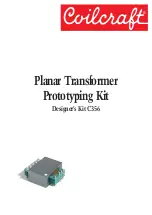
FT-2000
Operating Manual
Vertex Standard Co., Ltd.
93
five QMB (Quick Memory Bank) memories, labeled “C-1” through “C-5.” Each stores
various settings, not only the Main band’s (VFO-A) frequency and mode (See below). By
default, the 99 regular memories are contained in one group; however, they can be
arranged in up to six separate groups, if desired.
Quick Point:
The FT-2000’s memory channels store the following data (not just the operating
frequency):
Frequency
Mode
Clarifier status and its Offset Frequency
ANT status
IPO status
Roofing filter status and its Bandwidth
Noise Blanker status
CONTOUR status and its Peak Frequency
DSP Noise Reduction (DNR) status and its Reduction algorithm selection.
DSP Notch filter (NOTCH) status
NAR bandwidth status
DSP Auto Notch filter (DNF) status
Repeater Shift Direction and Shift Frequency
CTCSS status and Tone Frequency
QMB (Quick Memory Bank)
The Quick Memory Bank is comprised of five memories (labeled “C-1” through “C-5.”)
independent from the regular and PMS memories. These can quickly store operating
parameters for later recall.
QMB Channel Storage
1. Tune to the desired frequency on the Main (VFO-A) band.
2. Press the blue [QMB(STO)] button. The “beep” will confirm that the contents of
the Main (VFO-A) band have been written to the currently-available QMB
memory.
If you repeatedly press the [QMB(STO)] button, the QMB memories will be written in
the following order: C-2 C-3
C-4 C-5
C-1.
Once all five QMB memories have data on them, previous data (starting with channel
















































